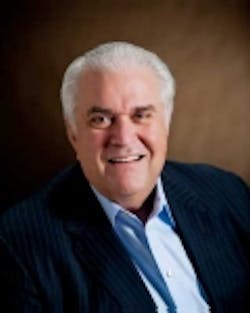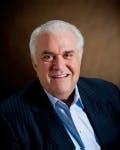10 tips to help you prepare for a medical emergency in the dental office
By Brad Guyton, DDS, MBA, MPH, and John H. Jameson, DDS
The newspaper’s out and your name is in the headline. A patient died on Tuesday in your dental chair.Are you prepared? When was the last time you discussed these scenarios with your team? Are you up-to-date with CPR, and did you take your last training seriously enough to retain the information in a real emergency? Mitigate panic and commit to updated emergency protocols by taking your CPR course seriously. Bring your team with you and develop systems in the office that reinforce a competent emergency team. Here are 10 quick reminders to jumpstart your emergency preparedness ...1. Why is CPR so important? The primary goal of CPR is to deliver oxygen to the brain. On average, it takes 10 minutes for emergency support to arrive after a 911 call. It only takes four to six minutes without oxygen before the brain starts to die. 2. How important is an Automated External Defibrillator (AED) in a dental office? If you can get an unresponsive adult on an AED within three minutes, then the chance of survival is 75%. For a patient in cardiac arrest, for every minute the AED is not used, the chance of survival goes down by 10%. Therefore, every dental office should have an AED and, sadly, fewer than 50% have one.3. How much is an AED for my dental practice? The good news is that the cost has come down within the last five years. Phillips Heart Start OnSite comes with a separate cartridge for young patients and sells at shows for about $1,000. You can read more about it at www.philips.com/healthcare. 4. How do we use it and where do I store it? Develop a protocol so that any assisting member of your team can quickly access the AED. Assign a 911 caller on your team and make certain they retrieve the AED. You may want to consider keeping the AED in your car, instead of the office, so you may access it in other situations. Remember to check the battery routinely. 5. What’s new in 2012 in terms of compressions, breaths, etc.? If you were previously trained in CPR, you likely heard the “ABC = Airway, Breath, Compression” motto, but that is no longer the mantra. Instead they are now teaching “CAB = Compression, Airway, Breath.” Adults in cardiac arrest need 30 compressions to every two breaths. If two rescuers are available and your patient is a child, then offer 15 compressions to every two breaths. In the heat of the moment, just remember that “30 to 2” will probably work well for everyone. If practicing two-rescuer CPR, the compressor needs to tell the breather “yes” or “no” when you see the breaths go in and the chest rises. If you’re alone, five cycles of 30/2 takes about two minutes. If you’re alone and emergency personnel haven’t been contacted, you may want to do five cycles of 30/2 and then go call 911. For compressions, place your hand on the lower half of the breastbone and remember that, for adults, you need to push the chest in at least two inches. It’s better to go a little too deep than not deep enough. Consider using the "Staying Alive" song to help you keep rhythm for compressions. Remember, compressions for adults and big kids are hard, fast, deep, and uninterrupted.6. What about for the patient who has a pulse but needs rescue breaths? Rescue breaths are five to six seconds for an adult before you check pulse at two minutes. Infants need breaths every three to five seconds.7. What about kids and infants? For infants, use two fingers (some of you may need to use a hand, but go softly). Put your other hand under the baby’s neck to try and secure the airway in an open position. If the head is too far forward or too far back, it constricts an infant’s airway. Two rescuers on a baby almost never happens, but when it does, the breather should be positioned at 12 o'clock and the compressor can sit at the baby’s feet, using two thumbs for compressions. While we typically take a carotid pulse for adults, a brachial pulse is much easier to detect in an infant. In an emergency situation, if the pulse on a young child or infant is less than 60 BPM, it is recommended to start CPR. 8. Does the "Duty to Act" law apply to me as a dentist? You are legally required to act when you are at work and/or in the practice. When in public, the Good Samaritan Law protects you from being sued if the CPR doesn’t work. To our knowledge, no one has ever been successfully sued for performing CPR.9. What should our CPR protocol look like in the office? The “chain of survival” for an adult is “Call EMS, administer CPR, use the AED, paramedic arrives, patient goes to the hospital.” The chain of survival for infants and young children is “prevention first, administer CPR as 911 is called, paramedic arrives, patient goes to the hospital.” The following steps will help you get the right systems in place so your team is ready.10. What systems need to be in place in our office to be ready?
Rewind a few days.
After you anesthetize the patient and leave the room for five minutes, you return to find the patient unresponsive and turning blue in your dental chair. You have your assistant run and call 911. You position the patient to begin CPR while yelling at the other assistant in a panic, “What happened?” You demand an emergency kit and oxygen.
You try to remember where to do chest compressions and the breathing ratios, but it is not coming back to you. The oxygen tank is empty and the emergency kit is outdated. You are now thinking the $1,000 AED might have been a good idea. Your heart is pounding like it is going to explode and your hands are shaking. Your mind is racing and your patient’s life is in your hands.
- Have the entire team attend the CPR updates routinely as determined by your State Board.
- Have the dentists each take an annual online course in emergency situations in the dental office.
- Designate people in the office for each emergency task.
- Role-play for different emergencies each year.
- Designate a team member who is responsible for the EMX kit to ensure that the drugs are present and up-to-date.
- Maintain extra tanks of O2 at all times.
- Post emergency protocols in the team area. In panic situations, lists always help ensure that you are not missing steps.
Dr. Brad Guyton
Dr. John JamesonDrs. Brad Guyton and John H. Jameson are part of Jameson Management, Inc., a team of 40 advisors improving the lives of dental professionals through in-office consulting, marketing, speaking events, products, and more. Visit www.JamesonManagement.com to register for a complimentary strategic assessment of your practice and to get more information.

